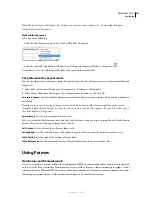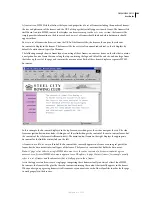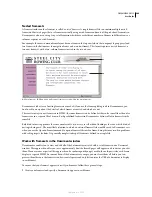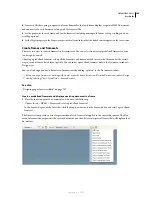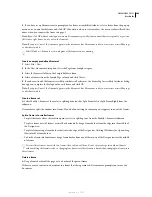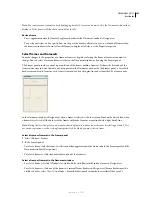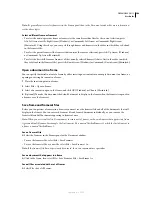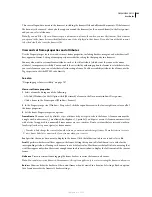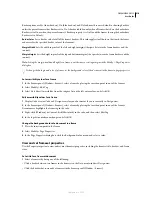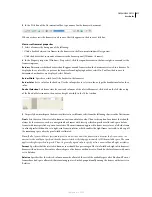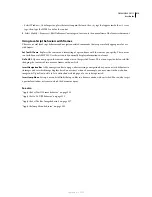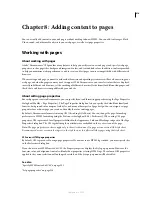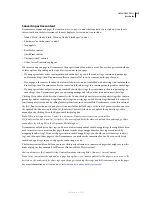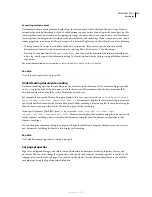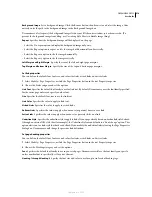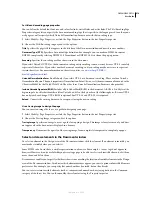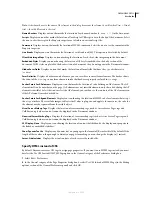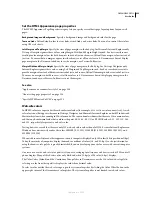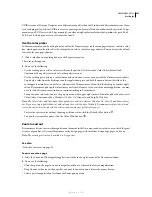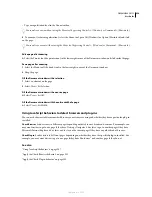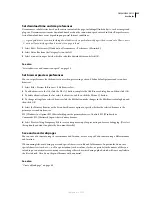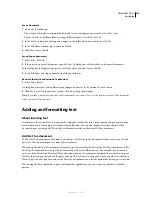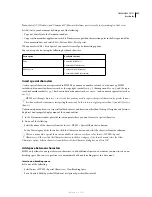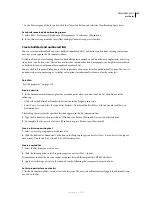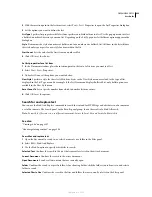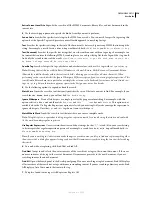
DREAMWEAVER CS3
User Guide
215
Converting active content
Dreamweaver repairs web pages that contain
active content
—content that requires users to click on it in order to
interact with it in the latest versions of Internet Explorer. Active content can include:
•
Adobe® Flash®, Adobe® Flash® Video, or Adobe® FlashPaper™ content
•
Shockwave® or Authorware® content
•
Java applets
•
Real Media content
•
QuickTime content
•
Custom ActiveX controls
•
Other ActiveX controls or plug-ins
Whenever you open a page in Dreamweaver, the page is scanned for active content. You are then presented with one
of three options, depending on the type of active content in your page.
•
If your page includes active content embedded with object tags, and those object tags contain only param tags
and/or embed tags, then Dreamweaver offers to convert all of the active content on the page for you.
•
If your page is the same as the above, but also includes active content embedded with object tags that contain other
kinds of tags, then Dreamweaver offers to convert only the object tags that contain param tags and/or embed tags.
•
If your page includes only active content embedded with object tags that contain more than just param tags or
embed tags, then Dreamweaver gives you a warning message and tells you that it cannot convert these tags.
Clicking Yes in either of the first two Convert Active Content dialog boxes locates existing object tags that contain
param tags and/or embed tags, wraps those object tags in noscript tags, and adds script tags that enable the expected
functioning of active content by calling JavaScript functions in an external file. Dreamweaver creates this external
file (AC_RunActiveContent.js) and places it in a new folder (called Scripts, at the root of your site) when you save
the updated file. You must upload the AC_RunActiveContent.js file when you upload the updated page, either
manually or by clicking Yes in the Dependent Files dialog box.
Note:
When inserting an Active X object in a document, Dreamweaver creates two external files:
AC_RunActiveContent.js and AC_ ActiveX.js. You must upload both files when you upload the updated page, either
manually or by clicking Yes in the Dependent Files dialog box.
Dreamweaver only adjusts object tags, and does not adjust independent embed or applet tags that might have been
used to insert active content in older pages (however, embed tags wrapped inside object tags are adjusted by
wrapping the object tag). If your web pages contain embed or applet tags, you should convert those tags to object
tags, and then open those pages so that Dreamweaver can perform the conversion for you. You can easily locate
embed and applet tags in your web pages by conducting a search.
The feature is extensible and allows you to use third-party extensions to convert web pages that might use specific
kinds of plug-ins (for example, RealPlayer or Windows Media Player content).
You can also access the Convert Active Content feature by selecting File > Convert > Active Content.
Note:
Active content must be updated on a page-by-page basis; you cannot update all of the pages in a site at once. It’s
best to do a site-wide search for object tags, open the pages containing those tags, and let Dreamweaver repair the pages.
For more information on active content, visit
www.adobe.com/devnet/activecontent/
.
September 4, 2007

